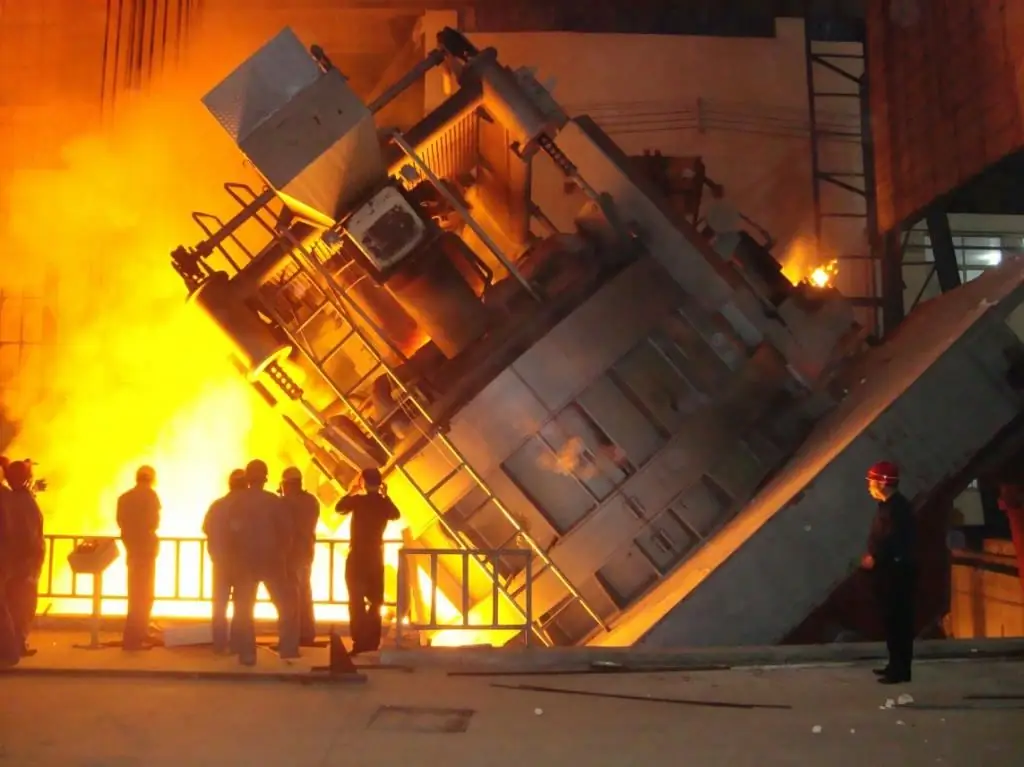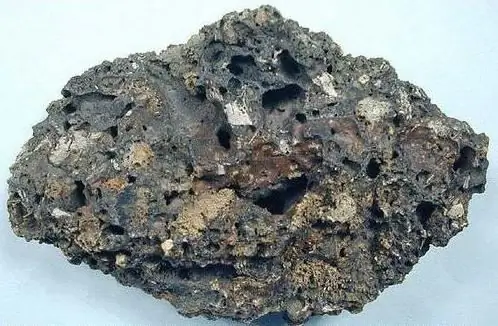2026 Author: Howard Calhoun | [email protected]. Last modified: 2025-01-24 13:10:32
The main melting unit in the steel industry is the open-hearth furnace. It is intended for the smelting of steel of a given chemical composition and with certain physical and mechanical characteristics. The open-hearth furnace, which has survived several industrial and technological revolutions, makes it possible to smelt the most complex steel grades, including alloyed ones.

The open-hearth type melting furnace is a regenerative flame reflector unit, consisting of the following structural elements:
- Workspace including back and front walls and vault.
- Heads with vertical channels through which fuel and air mixture are supplied to the working chamber and combustion products are removed from it.
- Gas and air slag tanks designed to collect and accumulate large fractions of smelting dust.
- Regenerators to ensure a constant temperature regime by heating the gas fuel and air mixture with the heat of the residual combustion products that exit the working chamber.
- A system of changeover reversing control valves designed to change the direction of supply of gas fuel and air mixture to the working space, as well as to remove combustion products from it.
- Water recovery boiler.
- Chimney.

Open-hearth furnace is a symmetrical unit, which implies the same design of its right and left parts relative to the vertical axis. Loading of raw materials is carried out through special openings - filling windows closed with valves, which are thick steel plates. On the rear wall of the unit there is an outlet through which the finished steel is poured into the ladle. During melting, the outlet is clogged with low-caking refractory clay, which is knocked out when the finished melt is released.
Open-hearth furnace can produce almost all types of carbon steels and many grades of alloy steel. But the use of various charge materials necessary for the open-hearth process saturates the molten metal with a significant amount of harmful impurities. Even a tiny fraction of additives such as sulfur, phosphorus, arsenic and some other elements contribute to a sharp deterioration in the physical and chemical properties of steel, lower the plastic qualities of the metal, and make it excessively brittle.

For the smelting of high-quality steel grades, an electric arc furnace is intended. The entire history of the development of mechanical engineering and metallurgy is reduced to the struggle for the qualitative characteristics of metals, the improvement of their mechanical, physical and chemical properties. And the secret of the highest quality of the metal lies in its chemical purity. Electrometallurgy helps to obtain chemically pure, and therefore high-quality metals and alloys. The bulk of alloyed high-quality steels are smelted in electric arc furnaces.
Recommended:
Arc steel furnace: device, operating principle, power, control system

Arc steel-smelting furnaces (EAFs) differ from induction furnaces in that the loaded material is directly subjected to electrical bending, and the current at the terminals passes through the charged material
Food stainless steel: GOST. How to identify food grade stainless steel? What is the difference between food stainless steel and technical stainless steel?

The article talks about grades of food grade stainless steel. Read how to distinguish food stainless steel from technical
Granulated blast-furnace slag: production, composition, GOST

The powerful development of metallurgy has led to the fact that a wide variety of raw materials have been used in this area. Naturally, after all operations, waste remains. Blast furnace slag also belongs to this category. Despite this, it is still usable
Oil production and its importance for the global economy

The phrase "oil production" has long been firmly established in the world lexicon and to a large extent has become a symbol of the modern era. Today, this product of the earth's interior, along with its eternal companion - natural gas, is practically the uncontested basis of world energy
Corrosion resistant steel. Steel grades: GOST. Stainless steel - price

Why metal materials break down. What are corrosion-resistant steels and alloys. Chemical composition and classification according to the type of stainless steel microstructure. Factors affecting pricing. Steel grade designation system (GOST requirements). Application area

